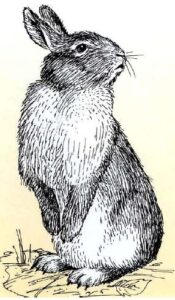Dugong, also known as “sea cow”, is a mammal endemic to the Andamans in India. It has been referred to in European mythology as a mermaid.
Distribution
Dugongs are found along the coasts of East Africa, the Red Sea and most of coastal Asia through the Philippines and Australia. In India, dugongs are restricted to the coastal waters of the Andamans. Another habitat was the Gulf of Mannar, particularly the area around Mandapam-Rameshwaram. They are no longer found there due to heavy fishing.
Habitat
Dugongs are bottom-feeders, grazing on aquatic plants. They are found in the shallow coastal habitats grazing over the sea-grass meadows. During the calving season, they stay away from the sea-grass beds.

Habit
Dugongs are slow-moving, defenseless, majestic and mystic creatures of the sea. They are rotund and less streamlined. The body is grey-brown in colour with a darker shade on top than underneath. The head is round with small eyes and a large snout. Dugongs grow tusks that break through the skin and are visible only in adult males and some old females. They have poor eyesight and find seagrass with sensitive bristles that cover the large fleshy snout. They walk with their pectoral fins as they feed on the seagrass. They are referred to as “sea cows” as they only feed on sea-grass, Halophila, and Halodule predominantly. The adult dugongs usually consume 25 kg. of grass every day. They weigh up to 400 kg. and measure around 3.5 m. in length.
Reproduction
Dugongs are generally slow breeders and have only one calf every three or four years. They become sexually mature between 10 and 17 years and have a pregnancy period of 13 months. Most of the calves are born in the months of September and November and the young ones are suckled for one and a half years.
Threats
The massive decline in dugong population is attributed to human-related causes like habitat loss, commercial fishing nets, shark nets and hunting. Unsustainable hunting for meat and leather is also a prime reason for its decline. It is also hunted for the oil from the leather that is said to have some curative properties. Various conservation measures like declaring areas as protected or dugong sanctuaries only can save them from extinction.
Official status
IUCN has listed dugong under the red list of threatened animals, vulnerable to extinction. It is also included under the Commonwealth Endangered Species Act, 1992.
R. Kavitha
C.P.R. Environmental Education Centre
Source: Eco News, Vol.7, No.3 (October – December), 2001.




